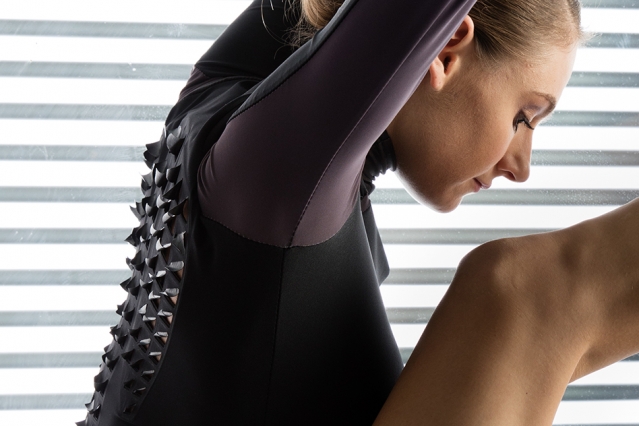Feb 18 2016
A new performance fabric, which actively responds to the wearers body temperature and perspiration levels, has been created by weaving a layer of bacteria over traditional fabric.
 Tangible Media Group/MIT Media Lab
Tangible Media Group/MIT Media Lab
bioLogic, a research team in the Tangible Media Group within the MIT Media Lab, have recently developed a new type of performance fabric which uses biomaterials research to optimise textile design. bioLogic are working towards the production of responsive bio-skin and living actuators
We are imagining a world where actuators and sensors can be grown rather than manufactured, being derived from nature as opposed to engineered in factories.
bioLogic
The team have identified previously unrecognised behavior of the ancient bacteria Bacillus subtilis natto. They observed that the bacterium's cells expaned and contract in response to atmospheric moisture levels. The team have been experimenting with implanting the bacteria into fabric in order to aerate garments.
The living cells are harvested in a biological lab and then weaved together with a micron-resolution bio-printing system, thus changing them into a 'second skin'. This synthetic bio-skin responds to sweat and body heat. High temperature or moisture levels result in flaps around heat zones opening to evaporate sweat and reduce body temperature.
Together with New Balance, bioLogic is using this methodology to develop sportswear that helps control the body temperatures of athletes, thus improving their performance.
We are trying to explore how the physical materials and physical environment can be smarter, more adaptive, and become part of us. This garment will understand when you sweat, and it will sense and open up to release your sweat, and close up to keep you warm again. A garment can become an interface that can communicate with your body.
The reason we started to explore this bacteria is that we knew that in the natural world there are a lot of smart materials that are naturally responsive. It’s very sensitive to even tiny changes in the skin condition, so we thought an on-skin transformable textile would be a really interesting application.
Lining Yao - Concept Development, bioLogic
bioLogic obtained a grant from the MIT Council for the Arts to invite product and fashion designers from the Royal College of Arts, Oksana Anilionyte and Helene Steiner, to take the project to a new artistic level. According to Yao, bioLogic has decided to shift the focus of its efforts to developing cutting-edge technological, conceptual or artistic ideas. bioLogic hopes that the wider design community, responsible for producing and using the fabric, will address pragmatic concerns like the caring and washing of garments manufactured from the “bio-skin”.
This is one specific instance. We are not really dedicated to fashion design or dance performance wear, but for this project we did specific experiments applying to those areas. We are devoted to the much more fundamental concept of ‘radical atoms.’ Basically, we are interested in materials that artists and designers would use to express their ideas.
For example, a product designer may use metal or glass or plastic. Computer designers may use a pixel in the computer screen, but that’s intangible. Physical materials are nice, but frozen; they’re dead. So we are interested in making materials that transform dynamically.
Professor Hiroshi Ishii - bioLogic